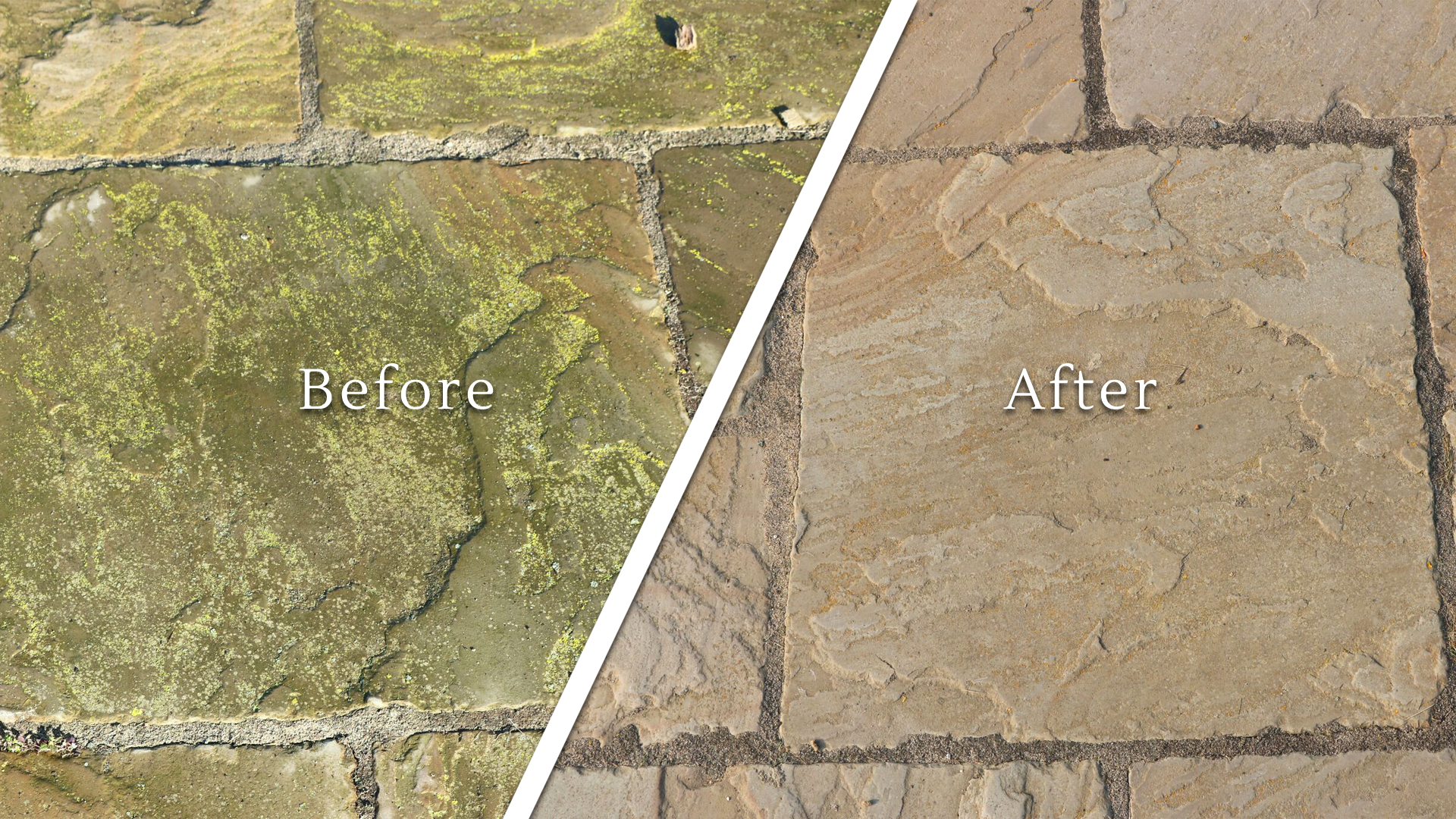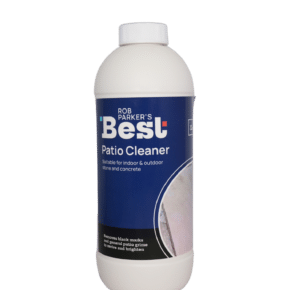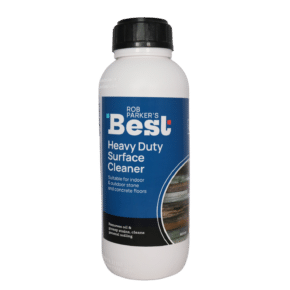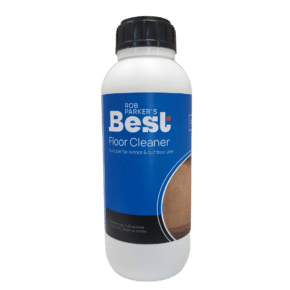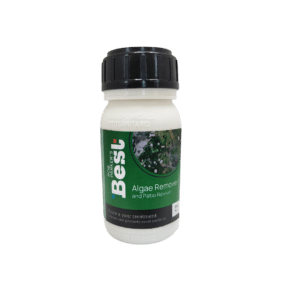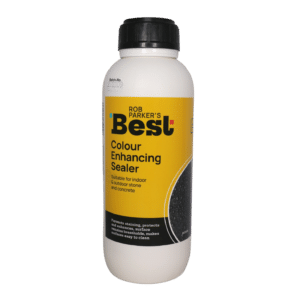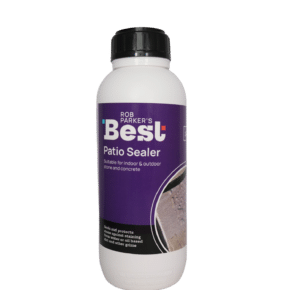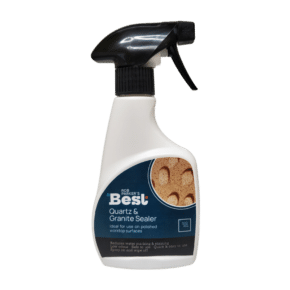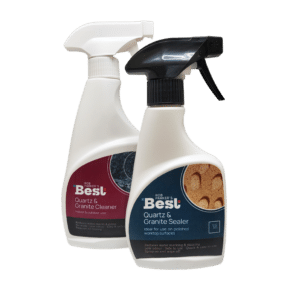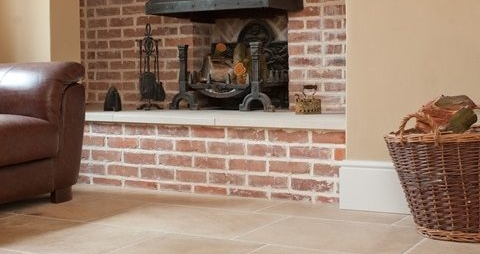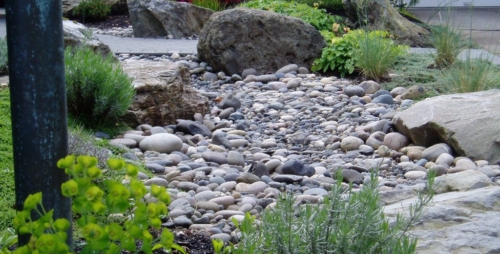Understanding Green Algae on Patios
Green algae is a simple, plant-like organism that thrives on damp surfaces and can turn patios a slippery green. It often appears as a slimy layer on concrete, stone, or brick patios. While not toxic, green algae on patio floors is unsightly and can make the surface dangerous to walk on. Many homeowners ask “How to remove green algae from patio” because it spreads quickly in shady, moist areas.
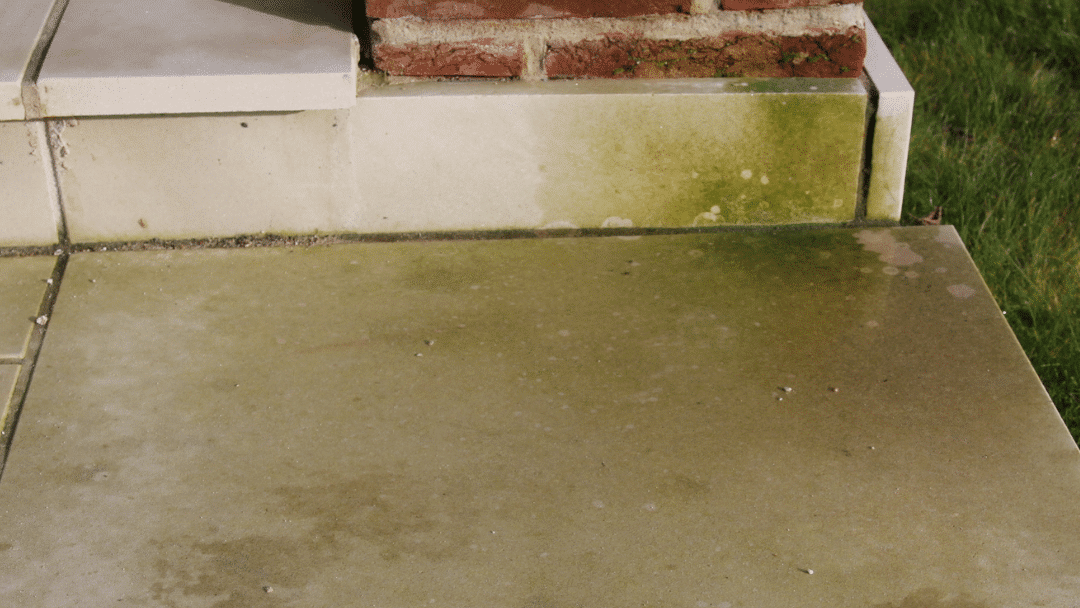
Typically, algae grows when patios stay wet – for example, in areas with heavy rainfall, sprinkler over-spray, or poor drainage. It feeds on organic debris (dirt, leaves) left on patio surfaces. In shaded patios, lack of sunlight allows moisture to linger, giving algae its perfect breeding ground. Removing it promptly is important, since untreated algae can stain porous surfaces and encourage more stubborn growth.
What is Green Algae?
Green algae are tiny, photosynthetic organisms. Unlike moss or fungus (which are fuzzy or filamentous), green algae form a thin, often slimy film that clings to hard surfaces. It’s usually bright or dark green and can spread in irregular patches. Because it’s essentially plant matter, it needs moisture and light to grow. Green algae is not the same as mildew or mold, but it can appear where these appear. For patio cleaning, algae is treated much like mold or mildew – it can be washed or chemically treated off hard surfaces.
Algae vs. Moss and Mildew
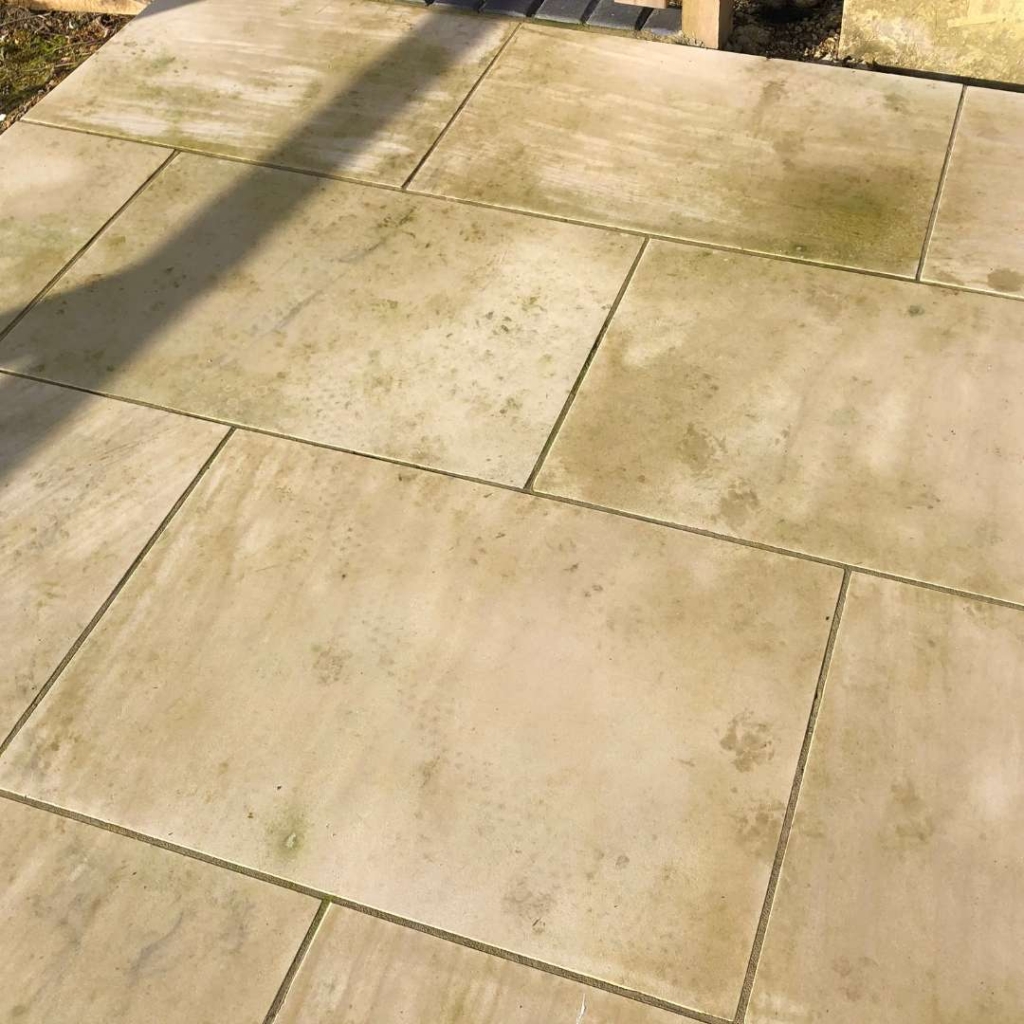

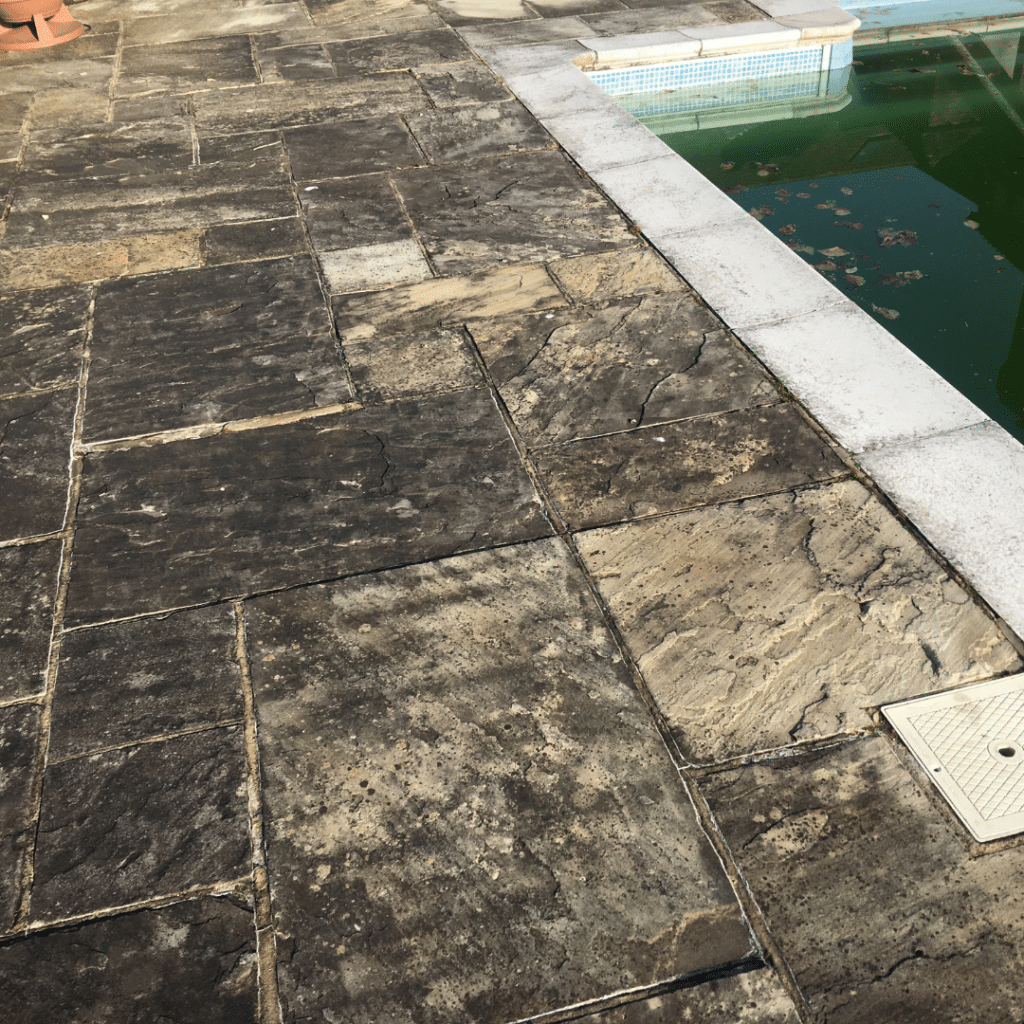
People often confuse algae with moss or mildew on patios. Moss is thicker and fuzzier, and tends to have visible little leaves – it usually grows in the mortar between stones or on wood. Mildew is a grayish fungus that looks powdery. Algae, by contrast, is slimy and more uniform in color. Knowing the difference helps choose a method: moss might require scraping or bristled brushing, while algae can often be washed or wiped away more easily. (The cleaning methods below generally work on algae, mildew, and even light moss.)
Why Algae Thrives on Patios
Algae loves conditions where patios stay damp and cool. Shaded areas (under trees, awnings, or next to buildings) dry very slowly. If a patio has poor drainage or pools water when it rains, those wet patches invite algae to bloom. Warmth and humidity speed its growth, so humid climates or rainy seasons often see rapid re-growth. Fallen leaves or mulch on the patio can also hold moisture against the surface, feeding algae. Essentially, wherever water lingers and sunlight is low, algae can take hold.
Keeping your patio clean of debris and ensuring good sunlight can drastically cut down algae growth. But once it’s there, it needs to be removed before it gets out of hand. The next sections list 9 expert tips – from quick fixes to long-term solutions – to remove green algae from your patio fast.
Safety and Preparation
Before you start any cleaning, prep and protect yourself and the area. Algae removal often involves scrubbing or strong cleaners, so take precautions:
- Protective Gear: Always wear rubber gloves to shield your skin from irritants (especially if using bleach or strong cleaners). If you spray or mix chemicals, goggles or a mask protect your eyes and lungs. Safety first – chemical splashes or accidental splatter can harm your skin or eyes.
- Cover Plants & Furniture: If nearby plants or furniture could get sprayed, cover them with plastic or move them. Even diluted bleach or vinegar can harm delicate plants. Taping down a tarp over flower beds is smart if you’re power-washing nearby.
- Tools at Hand: Gather a stiff-bristle scrub brush or stiff broom, a garden hose (or pressure washer if you have one), a spray bottle or bucket, and soap or cleaners. A long-handled brush makes scrubbing easier. You’ll also want a stiff deck brush or push broom for larger patios.
- Test Surface: If your patio is older or has delicate materials (like soft stone, wood deck, or painted surfaces), test your cleaning method on a small area first. High-pressure water can etch some surfaces, and strong chemicals can discolor certain stones. Start gently to avoid damage.
Being well-prepared means your cleaning will be safer and more effective. Once you have gloves on and tools ready, you’re set for the first tip: pressure washing for quick algae removal.
Tip 1: Pressure Wash Your Patio
Using a pressure washer is often the quickest way to blast algae off a patio. The high-pressure spray dislodges and washes away the slimy layer in seconds. Follow these steps for fast results:
- Choose the Right Equipment: Use a pressure washer rated around 1500–3000 PSI. If you don’t own one, many home improvement stores rent them. A high-pressure nozzle (the red or yellow tips) works well on concrete; for softer surfaces, use a wider, lower-pressure nozzle (green or white).
- Safety First: Stand back a few feet to avoid kickback debris. Wear safety glasses and gloves. Keep a steady stance so the blast doesn’t push you.
- Pre-soak the Area: Wet the patio with plain water first. This loosens some algae and prevents dust.
- Pressure Wash Technique: Hold the wand about 6–12 inches from the surface. Use sweeping motions, overlapping slightly, to avoid streaks. Don’t linger too long on one spot, or you might etch concrete or grout.
- Target Heavily Affected Zones: Focus on the greenest patches first, then go over the whole patio. You might see the algae “lift” and wash away in real time. Rinse off residues thoroughly.
Pressure washing is a superb fast solution, but it requires care. Too much pressure can damage the patio or cause backsplash. If a pressure washer isn’t available, a strong jet from a garden hose nozzle can help a bit, though it may take longer. After power-washing, let the surface dry; then check for any remaining green stains that might need scrubbing or treatment.
Tip 2: Scrub Manually with Detergent
If you don’t have a pressure washer, or as a follow-up to it, manual scrubbing is very effective – and simple. Here’s how to do it:
- Prepare a Cleaning Solution: Fill a bucket with warm water and add a few drops of dish soap or laundry detergent. Dish soap works well as a degreaser and cleaner. Mix until sudsy. (For extra algae-fighting power, you can add a small amount of liquid bleach – see Tip 3 below.)
- Wet the Patio: Use a garden hose or bucket to wet the area you’ll scrub. This helps the solution spread.
- Scrub the Surface: Dip a stiff-bristle broom or scrub brush into the soapy water and scrub the algae spots with firm back-and-forth strokes. A brush with a long handle is easier on your back. You’ll see the green streaks start to fade.
- Work in Sections: Scrub a 3–4 foot square section at a time. For very slimy patches, scrub extra, or let the soap water sit briefly before scrubbing.
- Rinse and Repeat: Rinse the scrubbed area with a hose, then move to the next section. It may take 2–3 passes to fully remove tough algae. Make sure to scrub all corners and edges, since algae loves those spots.
- Clean-up: Once scrubbed, hose off the entire patio well to remove all soap and algae residue. Let it dry in the sun if possible.
This method is budget-friendly and safe. According to cleaning experts, a mix of warm water and dish soap (a mild, grease-cutting detergent) can clean many outdoor surfaces. You’ll get a bit of a workout, but your patio will start to look much better.
DIY Pro Tip: After scrubbing, keep an eye on any remaining green streaks. You can always apply another round of soap and water, or move on to a stronger cleaner if needed (like the bleach solution in Tip 3). The goal is to physically remove as much algae as possible before moving to chemical treatments. any remaining green stains that might need scrubbing or treatment.
Tip 3: Use Bleach & Soap Solution
For stubborn algae that won’t come off with scrubbing alone, a diluted bleach solution is a go-to method. Bleach kills the algae quickly. Here’s a safe way to do it:
- Mix the Solution: In a large bucket, mix about ¾ cup of ordinary household bleach with 1 gallon of water. You can also add a teaspoon of dish soap to help the bleach cling and scrub (this makes a mild detergent bleach mix). This ratio is recommended for mildew and algae stains.
- Apply Carefully: Wet the algae-covered area, then pour or spray on the bleach solution. Work in small sections. Always start by spraying the perimeter of a green patch and move inward, rather than dumping bleach in the center (this prevents bleach run-off from spreading to plants).
- Scrub After Soaking: After letting the bleach solution sit for 10–15 minutes, scrub the area with your stiff brush. You’ll see the green color lighten. Then rinse immediately with plenty of water. Keep rinsing until no bleach odor remains.
- Observe Safety: Bleach can irritate skin and eyes, so wear gloves and maybe goggles. Never mix bleach with ammonia or other chemicals. Also, protect grass and plants: cover them or rinse any splatter on them quickly. According to cleaning guidelines, using bleach this way effectively removes mold and algae.
- Repeat if Needed: Very thick algae layers might need a second treatment. Just reapply and scrub again if you still see green spots after rinsing.
While a bleach solution can work quickly to remove green algae, it comes with risks — it can easily strip color from porous materials if left too long. Even with careful rinsing, bleach can sometimes damage your patio’s natural finish. That’s why many smart homeowners choose a safer, more effective alternative: Rob Parker’s Best Patio Cleaner. Specially formulated to target stubborn algae, moss, and lichen, it’s not only easier to use but also delivers professional-grade, long-lasting results without the harsh side effects of bleach. Protect your patio and get sparkling clean surfaces the right way with Rob Parker’s Best.
Tip 4: Apply White Vinegar or Natural Cleaners
If you prefer eco-friendly or plant-safe methods, white vinegar and other household ingredients can work on green algae. Vinegar is acidic and kills many microorganisms. Baking soda also helps scrub. Here’s how to use them:
- Vinegar-Water Mix: Mix equal parts white vinegar and water in a spray bottle or bucket. Spray generously on algae patches and let it sit for about 15–20 minutes. The acidity will start to “burn” the algae. Scrub with a brush and rinse. For very stubborn spots, you can use undiluted vinegar (be careful, it smells strong).
- Baking Soda Paste: Make a paste of baking soda and water (about 2 parts baking soda to 1 part water) and apply it to the algae spots. After a few minutes, scrub off with a brush. This mild abrasive action helps physically lift the algae.
- Dish Soap Boost: As before, you can add a drop of dish soap to these natural solutions to help spread them. Soap helps break surface tension so vinegar or baking soda can penetrate better.
- Caution with Plants: Vinegar is eco-friendly but still acidic. Avoid getting it on nearby plants or use a weak solution on edges. Rinse plants if they get any.
- Effectiveness: Natural cleaners work well on lighter algae and are safe to use regularly. BHG’s cleaning advice notes that vinegar-and-water works great on cement patios for spots. It’s a gentle approach and safe if you’re sensitive to harsh chemicals.
While these methods are a bit slower than bleach, they’re biodegradable and reduce chemical exposure. For mild algae or routine cleanings, vinegar and baking soda may be all you need. If algae returns quickly, however, you might combine these natural methods with one of the stronger tips above.
Tip 5: Try Commercial Algae Cleaners
There are many ready-made patio cleaners designed for algae and mildew. These products usually contain bleach or other biocides but are formulated for outdoor use. If DIY methods aren’t enough, a commercial cleaner can save time:
- Algae Removal Products: Look for products labeled for mildew/moss/algae removal. Follow the label instructions – typically you spray on and rinse after a set time.
- Eco-Options: If you want something safer around plants, there are biodegradable cleaners (for example, oxygen bleach products). These often require soaking in and scrubbing or rinsing.
- Safety Measures: Even commercial cleaners can irritate, so wear gloves. Cover any greenery and ensure pets/kids stay away until rinsing is done.
- Cost vs. Convenience: Commercial cleaners cost more, but they can be faster and less physical work. They might also contain mold inhibitors to slow regrowth.
- Use as Directed: Always follow instructions for dilution and safety. These cleaners are generally more potent than home mixes, so the effect is quicker.
Using a commercial solution can be a quick fix especially for large patios or very thick algae. Just remember to thoroughly rinse off the product and residue when done.
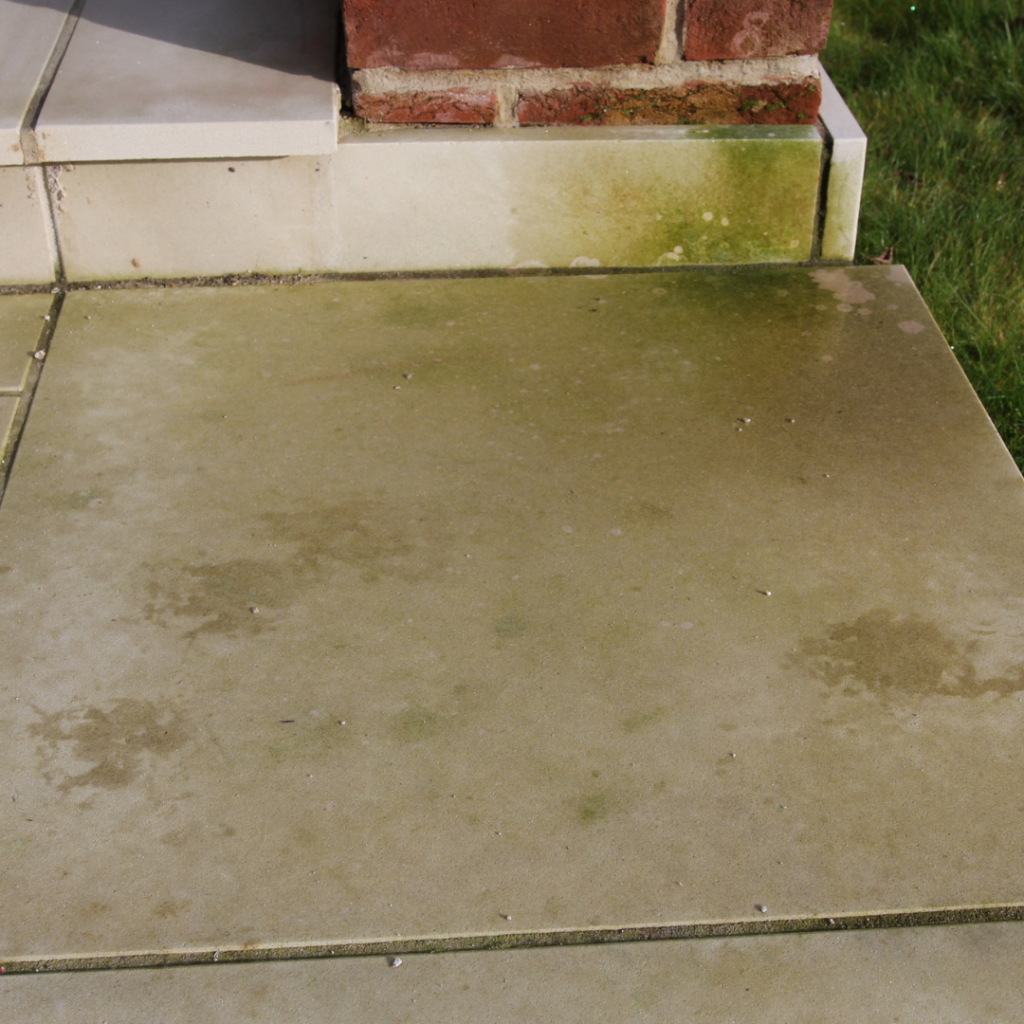
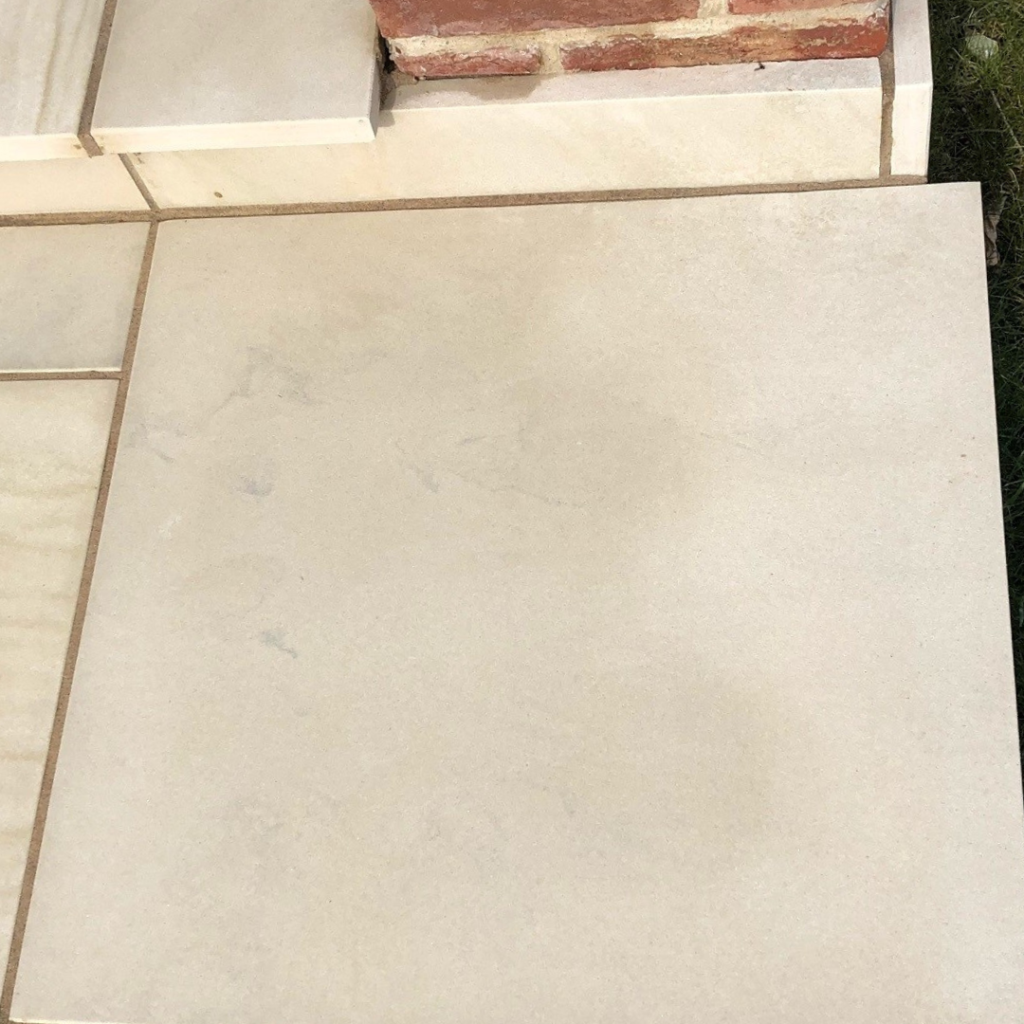
Comparison of Common Algae Removal Methods
| Method | Key Benefit | Consideration |
|---|---|---|
| Pressure Washing | Very fast algae removal | Requires equipment and care (can damage delicate surfaces) |
| Scrubbing with Soap | Safe, inexpensive, gentle (no bleach) | Labor-intensive; may need several passes |
| Bleach Solution | Kills algae instantly | Toxic to plants; must rinse thoroughly; use gloves |
| Vinegar / Baking Soda | Eco-friendly, safe for plants | Slower; may not remove heavy buildup completely |
| Commercial Cleaner | Convenient, often powerful | More expensive; contains chemicals; rinse carefully |
Tip 6: Increase Sunlight and Improve Drainage
To prevent algae from coming back, adjust the environment around your patio:
- Trim Shaded Areas: Cut back tree branches or bushes that keep your patio in shade. More sunlight and wind exposure will dry the patio faster after rain. Algae hates direct sun, so a sunnier patio will discourage regrowth.
- Fix Pooling Water: Check the patio slope and drainage. If water is pooling after rain, regrade slightly so it flows away. You might install or clear gutters, or add a drain. Standing water provides the moisture algae needs, so eliminating damp spots is key.
- Remove Debris Quickly: Clear leaves, mulch, or pine needles off the patio routinely. These can trap moisture and feed algae. A quick sweep after storms prevents debris from decomposing on the surface.
- Material Choice: If you ever replace patio materials, consider less porous options. Sealed concrete or certain stones are harder for algae to penetrate.
By tackling the root cause (moisture and shade), you reduce how often you have to clean. As one professional guide notes, “regular cleaning and maintenance” keeps patios in top shape. Think of this tip as long-term algae prevention – it complements all the removal methods above.
Tip 7: Seal and Protect the Patio Surface
After a thorough cleaning, apply a protective sealant to your patio. A high-quality concrete or stone sealer forms a clear coating that repels water and resists stains. Benefits:
- Creates a Water-Repellent Barrier: Sealed surfaces absorb far less water, so algae have trouble taking hold. This means algae and mildew stain much less readily.
- Simplifies Cleaning: Dirt and algae wipe off more easily on sealed patios. Often a quick scrub or spray can remove any resettled algae.
- Longevity: Sealants protect against weathering and UV too. Follow manufacturer instructions to apply – usually two thin coats. Only apply when the patio is completely clean and dry.
- Environmental Note: Use sealers labeled for outdoor use. Some sealants have strong odors, so wear a mask and keep the area ventilated.
- Maintenance: Reapply sealer as recommended (typically every 1–3 years) to maintain protection.
Sealers we recommend
Sealing is not a quick fix for an algae-covered patio – do it only after you’ve cleaned all the green off. But once sealed, your patio will stay cleaner much longer, reducing the work for future cleanings.
Tip 8: Routine Maintenance
The fastest way to keep algae from piling up again is regular upkeep:
- Sweeping: A dry sweep every week or two removes organic debris before it decomposes. Use a stiff broom and focus on corners and edges.
- Light Rinsing: Every few weeks (or after storms), spray down the patio with a hose. This washes away dirt that could feed algae. It takes minutes and prevents build-up.
- Inspect Often: Keep an eye out for the first signs of green. The earlier you clean it, the easier it comes off. A quick scrub with soap or a hose when you first see a patch is much faster than waiting for it to cover the whole patio.
- Seasonal Deep Clean: At least twice a year (e.g., spring and fall), do a deep clean using one of the above methods. This resets the patio’s condition. Many experts recommend routine cleaning to make outdoor spaces last.
Doing a little maintenance frequently makes the cleaning process a breeze. You’ll spend much less time scrubbing if you don’t let algae settle in thick. Think of maintenance as “algae prevention medicine” – a small dose regularly instead of a big treatment later.
Tip 9: When to Call the Pros
Sometimes, tackling algae alone is too big or the patio is too valuable to risk. Consider professional help if:
- Large or Delicate Surface: Very large patios or decks with intricate stonework might benefit from a professional pressure wash. They have industrial equipment and experience to clean without damage.
- Persistent Growth: If algae keeps returning quickly despite cleaning, a professional soft-wash service might be needed. These use specialized cleaners and techniques to kill spores that DIY methods miss.
- Health Concerns: If you have respiratory issues, spraying chemicals or mold might be hazardous for you. Pros have protective gear and training to handle mold safely.
- Time-Saving: Hiring a pressure-washing service (many advertise fast exterior cleaning) saves you days of work. It costs more, but it’s fast and thorough.
Before hiring, get a quote and ensure they’re experienced with patios. A reputable service often guarantees the job – if algae returns too soon, they’ll come back and re-clean.
Frequently Asked Questions (FAQs)
1. Is green algae harmful to people or pets?
Green patio algae is generally not toxic, but it can be slippery and make falls more likely. It’s a mild plant, not a poisonous mold. However, breathing in large amounts of any mold spores (including algal) can irritate sensitive people. Always rinse away algae thoroughly to prevent slick surfaces. If you have pets that walk on the patio, rinse their paws if you’ve used bleach or chemicals on the surface.
2. How often should I clean my patio to prevent algae?
At minimum, give your patio a quick sweep or hose-down every 1-2 weeks during damp seasons. Do a deeper clean (scrub or pressure wash) at least twice a year – for example, once in spring and once in fall. If your patio is very shaded or rainfall is heavy where you live, you might need to clean it more frequently. The more you maintain, the less stubborn algae becomes.
3. Can I use bleach on all types of patio materials?
Bleach works on most concrete, stone, brick, and ceramic patios. However, avoid bleach on colored pavers or delicate natural stones (like limestone) as it can lighten or etch them. Always rinse well after using bleach and test a small spot first. For wood decks or soft stone, skip strong bleach. Instead use milder methods (soap, vinegar) or a wood-safe cleaner, as recommended for that material.
4. What’s the fastest way to remove stubborn algae?
Pressure washing combined with a bleach solution is often fastest. First blast the area with a pressure washer (or hose) to knock off loose algae. Then apply a diluted bleach solution and scrub. This two-step approach tackles the problem quickly. Just remember to rinse thoroughly afterwards.
5. Will vinegar harm my plants or grass?
Undiluted vinegar can damage plants it touches, so be careful. When using vinegar, it’s best to spray or apply it directly on the algae and not on grass or flowers. If some vinegar lands on nearby vegetation, rinse the plants with water right away. Diluted vinegar (half water, half vinegar) is milder and safer for incidental contact, but still try to avoid letting it soak into the soil.
6. After cleaning, algae came back. What did I do wrong?
If algae reappears, it usually means some spores were left behind or the patio environment still favors growth (damp and shady). Make sure you completely rinsed off cleaners and debris after the first clean. Next time, focus on drying out the area: get more sun on the patio or adjust drainage. Sealants can also stop quick re-greening. You might also need a second cleaning if the growth was heavy – sometimes one pass doesn’t catch all the root of the algae.
7. Can I use a pressure washer on a wood deck or plastic patio furniture?
Be cautious: on wood decks, use a wider spray pattern and lower pressure to avoid splintering. On plastic furniture, keep the nozzle moving and at a distance; the force can crack plastic or strip paint. If unsure, test a corner or use a hose and brush instead for those items.
8. Are there any eco-friendly algae killers?
Yes – besides vinegar and baking soda, there are “green” cleaners on the market made from plant-based surfactants and oxygen bleaches. For example, products with hydrogen peroxide or bio-enzymes claim to kill algae without toxicity. These can work well if you follow the directions. They may take a bit longer to fully remove the algae but are kinder to the environment.
9. Does sunlight alone kill green algae?
Sunlight by itself can dry out and slow algae growth, but it usually won’t remove an existing buildup. Once algae has attached to a surface, you still need to clean it off. However, making sure the patio gets full sun each day can prevent algae from coming back quickly.
10. What if my patio surface is already sealed?
Sealed surfaces resist staining, but they can still get algae on them over time. If your patio is sealed and has algae, you can clean it the same way (pressure wash, scrub, etc.). After cleaning, you may not need to reseal immediately, but check the sealant’s condition. A fresh coat of sealant after cleaning will give the best protection.
Conclusion
Removing green algae from a patio doesn’t have to be a chore. By following these 9 expert tips – from pressure washing and scrubbing to safe chemical or natural cleaners – you can restore your patio’s appearance quickly. Remember to wear protection and rinse thoroughly, especially when using strong solutions. After cleaning, maintaining sunlight and keeping the area dry will prevent algae from returning. With regular upkeep and the right methods, your outdoor space will stay clean, safe, and pristine. Enjoy your refreshed patio, and don’t forget: a little maintenance goes a long way in keeping algae at bay!
If you have any questions or are looking for the best patio solution, contact us using the form below.


